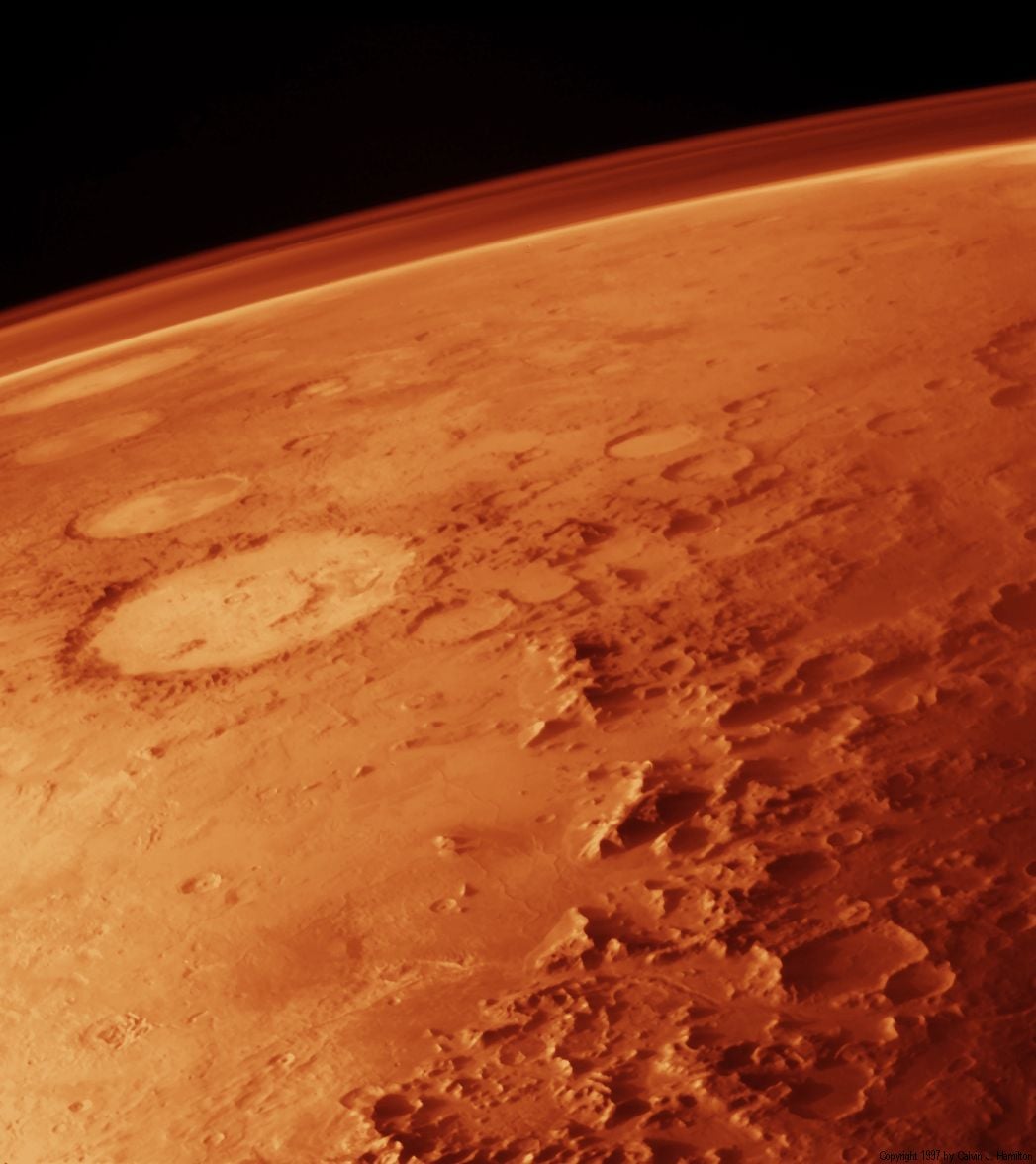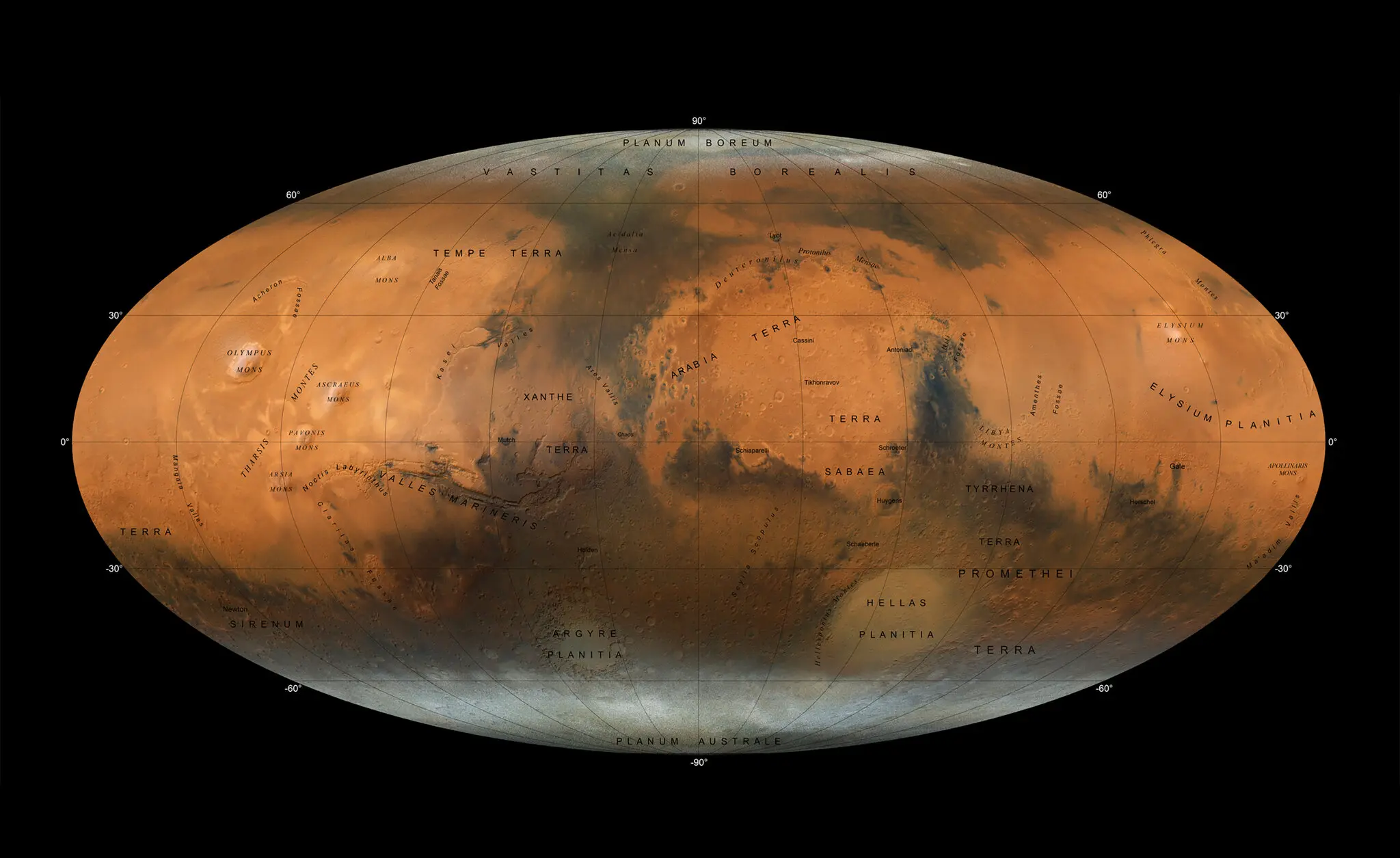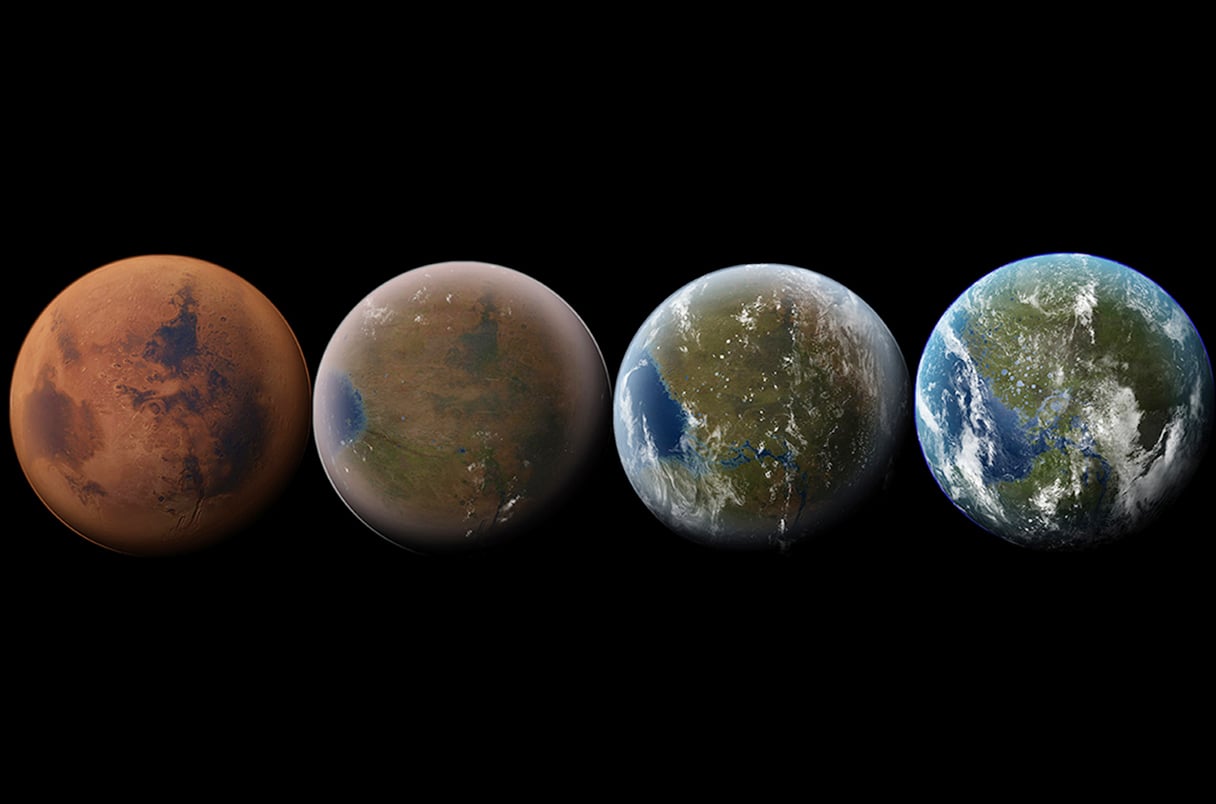Multiple plans exist to explore Mars in the coming decades using robotic and crewed missions. The ultimate goal of these missions is to determine whether human beings could live there someday. This requires access to building materials, water, cutting-edge manufacturing technology, and closed-loop habitation systems with bioregenerative life support systems(BLSS). Basically, future settlers will need to create conditions that mimic Earth's self-sustaining ecological systems - essentially, we need to "take Earth with us" to other planets.
In the long term, these efforts could extend to the entire planet to make Mars "Earth-like." This process is known as "terraforming," and many proposals have been made over the past 50 years. In a recent study, an interdisciplinary team presented a novel way to warm up Mars' atmosphere using nanoscale aerosols of graphene and aluminum. Their findings indicate that Mars' atmospheric dynamics and radiative processes make engineered aerosol warming possible, which could constitute the first step in terraforming the planet.
Edwin S. Kite, an associate professor at the University of Chicago and a member of theCuriosityrover's science team, led the study. He was joined by researchers from the planetary science research Aeolis Research, Northwestern University, the University of Central Florida, the MIT Haystack Observatory, the European Centre for Medium-Range Weather Forecasts(ECMWF), and NASA's Jet Propulsion Laboratory. The paper describing their findings was presented at the 2025 Lunar and Planetary Science Conference.
 When it comes right down to it, the process of terraforming Mars consists of three interconnected steps. This means that progress in one of these areas will lead to progress in the others. They include warming the atmosphere, thickening the atmosphere, and melting the polar ice caps and permafrost. By warming the planet, the polar ice caps and permafrost would melt, releasing liquid water onto the surface and water vapor into the atmosphere.
When it comes right down to it, the process of terraforming Mars consists of three interconnected steps. This means that progress in one of these areas will lead to progress in the others. They include warming the atmosphere, thickening the atmosphere, and melting the polar ice caps and permafrost. By warming the planet, the polar ice caps and permafrost would melt, releasing liquid water onto the surface and water vapor into the atmosphere.
The abundant dry ice in both polar caps would sublimate, releasing additional carbon dioxide into the atmosphere and warming it further. As Kite told Universe Today via email:
Warming Mars is crucial because of positive climate feedbacks. As the planet warms, CO2 ice at the poles and adsorbed in the soil begins to sublimate, thickening the atmosphere and releasing more water vapor. This enhanced atmosphere further warms the planet through an increased greenhouse effect, potentially releasing more water vapor. Each of these steps reinforces the others.
As Robert Zubrin stated inThe Case for Mars, this process would lead to an atmospheric pressure (atm) of about 300 millibars (30% of Earth's atm at sea level). This would be sufficient for people to stand outside without a pressure suit, though they would still need warm clothing and oxygen. Many proposals have been suggested for accomplishing the first step, ranging from distributing low-albedo material or plants over the polar caps (Sagan, 1973) to filling the atmosphere with chlorofluorocarbons (CFCs) (Lovelock/Alleby, 1984) and ammonia.
There have also been proposals to add carbon dioxide or methane to the atmosphere by harvesting it locally or importing it from another body (Earth, Venus, or Titan). These proposals would require a major commitment regarding resources and significant technological advances. "Previous proposals often relied on importing large quantities of gases from Earth or mining scarce Martian resources," Kite added. "These approaches face significant logistical and economic hurdles. Additionally, many require vast amounts of material to achieve meaningful warming."
 Aerosols, on the other hand, represent a cost-effective means of raising atmospheric temperatures on Mars. However, several questions remain about how atmospheric dynamics on Mars are affected by warming (due to greenhouse gases or aerosols) and vice versa. As they note in their paper, these include:
Aerosols, on the other hand, represent a cost-effective means of raising atmospheric temperatures on Mars. However, several questions remain about how atmospheric dynamics on Mars are affected by warming (due to greenhouse gases or aerosols) and vice versa. As they note in their paper, these include:
- How high are aerosols lofted?
- How widely do they disperse?
- Do they drive local weather at the release point?
- How long until steady state?
- Does release location matter?
Previous studies have examined aerosol feedback on Mars for natural dust, which is periodically kicked up by seasonal dust storms. Their work also builds on a previous study led by Samaneh Ansari, a postdoctoral student at Northwestern University, which included Kite and several other co-authors from this latest study. In that study, the team considered how nanoparticles manufactured in situ from Martian resources could warm the planet's atmosphere. As Kite explained:
The method proposed in our paper #1 involves releasing engineered nanoparticles into the Martian atmosphere. These particles are designed to trap heat, enhancing the greenhouse effect. You could indeed consider this a form of In-Situ Resource Utilization (ISRU), as the nanoparticles could be manufactured from materials readily available on Mars.
For this latest study, the team combined the Mars Weather Research and Forecasting(MarsWRF) model—a modified version of the WFT developed by the National Center for Atmospheric Research(NCAR)—with a plume-tracking General Circulation Model(GCM). This latter model was based on previous work the team performed tracking methane plumes on Mars. These aerosols absorb and scatter light in the mid-infrared (MIR) spectrum, specifically at ~10 and ~20 micrometers (μm).
 Combined with time-varying simulations of natural dust, their results showed that these plumes would spread globally within a year and thicken Mars' upper atmosphere. At a release of 2 liters per second (0.5 gallons/second), the team calculates that Mars' greenhouse effect would double, raising its temperature by +5 kelvin (5°C; 9°F). However, the warming would cease once the aerosols are no longer being released. However, continuously releasing nanoparticles could warm Mars' atmosphere by more than 35 K in 10 years.
Combined with time-varying simulations of natural dust, their results showed that these plumes would spread globally within a year and thicken Mars' upper atmosphere. At a release of 2 liters per second (0.5 gallons/second), the team calculates that Mars' greenhouse effect would double, raising its temperature by +5 kelvin (5°C; 9°F). However, the warming would cease once the aerosols are no longer being released. However, continuously releasing nanoparticles could warm Mars' atmosphere by more than 35 K in 10 years.
This would be enough to trigger melting at the poles, thickening the atmosphere and leading to additional warming. The team calculates that the resulting warming would double atmospheric circulation, where warm, moist air rises near the equator, cools, and descends at higher altitudes ("Hadley cells"). Steeper temperature gradients between sunlit regions and the polar regions would double the speed of near-surface winds, which is the opposite of how Earth's CO₂-warming response works.
These stronger surface winds would lift more dust, creating a potential negative feedback mechanism since dust reduces dayside temperatures. The sublimation of the CO₂ in the polar caps, which causes most seasonal dust storms to form, could likely mitigate this. However, significant challenges remain, and further research is needed to account for additional factors, like the agglomeration of aerosols and dust particles and Mars' water cycle. Nevertheless, the team concludes that engineered aerosols would be an effective first step in terraforming Mars.
"This is an early-stage concept," Kite stated. "If proven feasible, it could potentially make the Martian environment more amenable to exploration and research. Ultimately, a hope is that a photosynthetic biosphere could be established at the surface of Mars." Their proposal was also presented at the 2024 Mars Terraforming Workshop Proceedings, which took place on April 15th and 16th, 2024, in Pasadena, California.
Further Reading:USRA
 Universe Today
Universe Today
